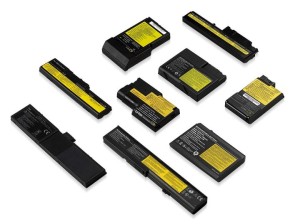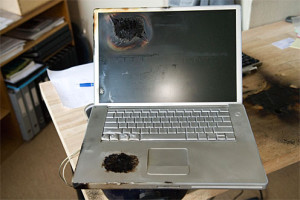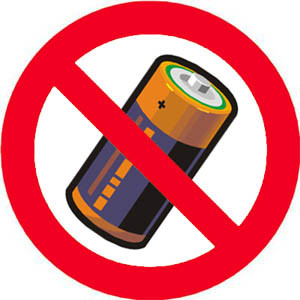Non-removable Apple Batteries. Why?
Introduction: Permanent vs. Removable Batteries
 Is usability of portable devices better when their batteries can be removed on the fly? Definitely. As a business developer who has spent countless months on the road in my career, I am yet to find a way to justify preferring a portable power bank over a simple, removable battery. Still, there are many schools of thought on this topic – both regarding Apple’s products specifically and regarding product strategy in general. There are five reasons device manufacturers do this, and there are three why they shouldn’t. This is not a numbers game, but I feel in this case 3>5. Let’s explore the pros and the cons of device usability in the context of fixed – or permanent – batteries in portable devices.
Is usability of portable devices better when their batteries can be removed on the fly? Definitely. As a business developer who has spent countless months on the road in my career, I am yet to find a way to justify preferring a portable power bank over a simple, removable battery. Still, there are many schools of thought on this topic – both regarding Apple’s products specifically and regarding product strategy in general. There are five reasons device manufacturers do this, and there are three why they shouldn’t. This is not a numbers game, but I feel in this case 3>5. Let’s explore the pros and the cons of device usability in the context of fixed – or permanent – batteries in portable devices.
Background
I walked into a cafe in Los Angeles this morning and needed to urgently get online for a Skype call with an associate in Canada: I was lucky enough to sport a tiny table in the corner, but the nearest power outlet was “half a wall” away. I like my Apple MacBook Pro, but because my fixed battery in it was at 8 percent, I had no choice but to use my Asus PC – because that one comes with a removable clip-on battery, and I always carry a spare – and sometimes two – with me. What’s the logic behind disallowing a user to take out a dead battery and replace it with a charged one on the spot instead of forcing him/her to frantically search for the nearest power outlet to recharge the device? Better yet, why am I required to make two trips to the Apple store just to change a dead battery?
Pros (1/5): User-to-Brand Marriage | “The Big One”
 I could not find better words to describe the phenomenon: by permanently sealing your device, Apple can virtually guarantee that you will go to an Apple store when your battery dies. And on that special day, something magical happens: you talk to a Genius at the Genius Bar. And one of the first things that any respectable Genius will tell you is that – hey – your device is about 3 years old, and perhaps it’s time for you to look around and to see if you should pick another one! You may or may not buy anything on that day, but you will certainly spend at least 10 minutes talking to someone who knows a lot more about Apple’s product line, and in turn you will learn a thing or two.
I could not find better words to describe the phenomenon: by permanently sealing your device, Apple can virtually guarantee that you will go to an Apple store when your battery dies. And on that special day, something magical happens: you talk to a Genius at the Genius Bar. And one of the first things that any respectable Genius will tell you is that – hey – your device is about 3 years old, and perhaps it’s time for you to look around and to see if you should pick another one! You may or may not buy anything on that day, but you will certainly spend at least 10 minutes talking to someone who knows a lot more about Apple’s product line, and in turn you will learn a thing or two.
As a result, you will feel connected to your technology. While at it, you may buy an extra charger or a software upgrade, play with (and appreciate) a new iPad, or simply look around and see some happy faces of other Apple shoppers and users. Whatever you do, this battery replacement “adventure” will be associated with at least two physical trips to your local Apple store – usually 24 hours apart – and will result in keeping you emotionally “married” to your growing arsenal of Apple products and the culture behind it. Amen.
Can you argue against this? Not really, unless you are an educated consumer who is always researching and following trends and technology news. If you are this kind of a guy or a gal – i.e., if you know exactly what technology you need and what you will buy next without talking to a so-called genius, then this process feels like nothing more than a marketing gimmick. But one thing is clear if you are this type of person: you are the narrow minority, and you are probably a computer geek. Now, isn’t it sad that the people who can help Apple’s product strategy the most are the same people whom Apple chooses to ignore in their Market Segmentation strategy? I think it is.
Pros (2/5): Size and Weight Factors
 Devices with fixed batteries tend to be smaller and lighter. A removable rugged-shell laptop battery equipped with metal-to-metal terminals weights 2-3 ounces more, while the internal battery bay and the removable door on the back cover can also add 2-4 ounces. Further, the internal space required to accommodate the replaceable battery inside a laptop can add some overall girth to the device.
Devices with fixed batteries tend to be smaller and lighter. A removable rugged-shell laptop battery equipped with metal-to-metal terminals weights 2-3 ounces more, while the internal battery bay and the removable door on the back cover can also add 2-4 ounces. Further, the internal space required to accommodate the replaceable battery inside a laptop can add some overall girth to the device.
Still, considering today’s sophisticated plastics and precision molds available to every serious manufacturer, the overall effect of having a replaceable battery bay on the device’s size and weight is negligible.
Pros (3/5): Product integrity
It is easily argued that if a device is permanently sealed, the user is less likely to damage it accidentally while replacing the battery – either due to improper mechanical manipulation or due to using a wrong battery. Similarly, if the device cannot be easily opened, the user is simply less likely to tamper or “experiment” with its internal components, thereby making it less likely that the device will be broken.
From this perspective, it is rather practical for all manufacturers to use permanent batteries. However, it is not difficult to seal the internal components with a sub-cover to ensure that the “guts” of the device are inaccessible when the main back cover is removed for battery replacement.
Pros (4/5): Service Income
 When the time comes to replace the permanent battery in a sealed device, the user generally has no choice but to resort to the manufacturer’s recommended service channel to install the new battery, which in turn ensures that the manufacturer will enjoy the income from the sale of a new battery, as well as from the fees charged for installation and in many cases for handling and shipping. Although some users will venture to buy OEM units and to replace the battery by following instructional YouTube videos, most users will follow the path of least resistance and will turn to an authorized service provider to get the job done, as I did when my MacBook Pro battery weathered away after 2.5 years: I went to the nearest Apple store, paid $130 plus tax, and relinquished my MacBook for 24 hours into the hands of people who took about three minutes to remove the eight screws on the back cover, to replace the battery, and to screw the back cover onto its place.
When the time comes to replace the permanent battery in a sealed device, the user generally has no choice but to resort to the manufacturer’s recommended service channel to install the new battery, which in turn ensures that the manufacturer will enjoy the income from the sale of a new battery, as well as from the fees charged for installation and in many cases for handling and shipping. Although some users will venture to buy OEM units and to replace the battery by following instructional YouTube videos, most users will follow the path of least resistance and will turn to an authorized service provider to get the job done, as I did when my MacBook Pro battery weathered away after 2.5 years: I went to the nearest Apple store, paid $130 plus tax, and relinquished my MacBook for 24 hours into the hands of people who took about three minutes to remove the eight screws on the back cover, to replace the battery, and to screw the back cover onto its place.
The argument against this is obvious. The same logic does not apply to all manufacturers in the same way, but Apple’s example is a classic. Namely, Apple enjoys about $50 in net profit from replacing your MacBook battery. The average useful life of a MacBook is under 6 years, while an average battery works for 3 years. This means that Apple gets to enjoy this “benefit” only once in the lifetime of a typical device. The same applies to iPhones. The question comes naturally: Is Apple really preoccupied with making an extra $50 from your device? Of course not: Apple notebooks are already 30%+ more expensive than PC-based systems of similar configuration, and it can easily price every one of them about $50 higher and is unlikely to suffer a notable reduction in demand – that’s Elasticity of Demand 101. Further, the marginal cost of adding a removable back cover onto MacBooks is miniscule – we are talking $10-15 dollar difference in cost of manufacturing per notebook. This cost is lower for iPhones – under $10 per device.
Pros (5/5): Cost Savings
It is clear that a device with non-removable back cover and a permanent battery is cheaper to manufacture. The argument against this is in plain sight: the savings are marginal, as referenced earlier, especially when these savings come at the expense of seriously hurting the device’s usability.
Cons (1/3): Users in Pain are Unhappy Users
 As with my Skype call this morning, I often catch myself giving the manufacturers of devices with permanent batteries unspeakable names. On a plane, at a picnic, in a hotel or a coffee shop, and elsewhere away from my home and office, I don’t like having to look for a power outlet when my battery is near the zero mark. And even when there is an outlet nearby, no device can be charged instantly, and we often don’t have the time to sit and wait until the indicator reaches at least 25 percent, let alone 100. For another example, last week I had to beg someone to change seats with me on a flight to London because the power outlet near me was broken and I needed to use my MacBook Pro during the flight. What a kluster! For this reason, I – being a geek – dislike my MacBook Pro and my Google phone. And if you are a geek too, you know exactly how I feel. We hate worrying about our battery life, and people like us would rather carry an extra battery around. And when we can’t, we don’t exactly feel “emotionally connected” to the manufacturer, do we? …because we know that the manufacturer’s priorities are not in line with our needs.
As with my Skype call this morning, I often catch myself giving the manufacturers of devices with permanent batteries unspeakable names. On a plane, at a picnic, in a hotel or a coffee shop, and elsewhere away from my home and office, I don’t like having to look for a power outlet when my battery is near the zero mark. And even when there is an outlet nearby, no device can be charged instantly, and we often don’t have the time to sit and wait until the indicator reaches at least 25 percent, let alone 100. For another example, last week I had to beg someone to change seats with me on a flight to London because the power outlet near me was broken and I needed to use my MacBook Pro during the flight. What a kluster! For this reason, I – being a geek – dislike my MacBook Pro and my Google phone. And if you are a geek too, you know exactly how I feel. We hate worrying about our battery life, and people like us would rather carry an extra battery around. And when we can’t, we don’t exactly feel “emotionally connected” to the manufacturer, do we? …because we know that the manufacturer’s priorities are not in line with our needs.
I feel a similar issue is holding back electric car manufacturers from selling more cars, albeit for a different reason. Namely, the fact that batteries in electric cars take a long time to recharge prevents many car owners from switching to 100% electric vehicles. As a Tesla owner, I would much rather prefer to drive up to the power station and replace my battery with a charged one instead of sitting there for half an hour while my fixed battery is recharged. Naturally, there is simply no technical infrastructure to make this business model feasible at this time, but it clearly represents a better long-run solution in terms of usability.
Cons (2/3): Quick Disconnect
 Like it or not, there are times when you just need to pull your battery out to save the notebook. The same applies to mobile phones and other portable devices. Let’s say your notebook is frozen (figuratively speaking) and started overheating (literally). There is a quick fix: you press and hold the power button to turn it off. But if that doesn’t work, your only recourse is to immediately remove the battery. But if your battery is sealed behind 8 screws on the back cover, you are… screwed.
Like it or not, there are times when you just need to pull your battery out to save the notebook. The same applies to mobile phones and other portable devices. Let’s say your notebook is frozen (figuratively speaking) and started overheating (literally). There is a quick fix: you press and hold the power button to turn it off. But if that doesn’t work, your only recourse is to immediately remove the battery. But if your battery is sealed behind 8 screws on the back cover, you are… screwed.
The photo here shows exactly what happened to me: if I had been able to remove the battery, I possibly would not have ruined the laptop, or at least the damage would have been less severe. Is it fair to say that this happens so seldom that this use case doesn’t need to be addressed? Good question. Apple will argue that it’s very fair. But I will kick it up another notch and ask this: what if this battery incident also triggered an office fire that killed half a dozen people and destroyed, say, nineteen million dollars worth of equipment and other property? I think this is a no-brainer: this is a safety issue that must be addressed.
Cons (3/3): Battery not required
 Did it occur to anyone that you don’t need to use a battery to work on your laptop? That’s right, you can plug it into a UPS and work just fine, while your battery rests, awaiting the time when you actually need to work without a power outlet. But when the battery is fixed, it is constantly charging… and slowly weathering away, even though you are not really using it. Isn’t it sad? You can be using your notebook strictly within the limits of your desk and be constantly plugged in, but about 3 years later, your battery will still be dead or near-dead. Thoughts to share? For starters, try thinking about the effects of this on the environment of Planet Earth.
Did it occur to anyone that you don’t need to use a battery to work on your laptop? That’s right, you can plug it into a UPS and work just fine, while your battery rests, awaiting the time when you actually need to work without a power outlet. But when the battery is fixed, it is constantly charging… and slowly weathering away, even though you are not really using it. Isn’t it sad? You can be using your notebook strictly within the limits of your desk and be constantly plugged in, but about 3 years later, your battery will still be dead or near-dead. Thoughts to share? For starters, try thinking about the effects of this on the environment of Planet Earth.
Conclusions and Solutions
 Manufacturers can find practical ways to stay in touch with their clients for marketing purposes, besides crippling their devices and limiting their practical applications just to lure the users back into the store down the road for insuring the brand’s uninterrupted relationship with its patrons and for maximizing the chances that the user will continue using the same brand. I feel this is exactly what Apple is doing. This technique only works effectively for uneducated, “sheepish” users, or otherwise for non-power users. Most mobile device manufacturers are making sealed devices for the other reasons, which were discussed above. But clearly, with only a little bit of bona fide effort, every manufacturer can comfortably afford to reward its users with the pleasure of not being dependent on free electricity in Starbucks shops around the city to keep their devices running on the go.
Manufacturers can find practical ways to stay in touch with their clients for marketing purposes, besides crippling their devices and limiting their practical applications just to lure the users back into the store down the road for insuring the brand’s uninterrupted relationship with its patrons and for maximizing the chances that the user will continue using the same brand. I feel this is exactly what Apple is doing. This technique only works effectively for uneducated, “sheepish” users, or otherwise for non-power users. Most mobile device manufacturers are making sealed devices for the other reasons, which were discussed above. But clearly, with only a little bit of bona fide effort, every manufacturer can comfortably afford to reward its users with the pleasure of not being dependent on free electricity in Starbucks shops around the city to keep their devices running on the go.
To be constructive, I propose this elegant solution, which should work wonderfully for Apple:
- Equip all notebook computers with replaceable battery modules, which will cost Apple under $15 per unit.
- Sell all notebooks for $100 more ($15 to offset the cost of manufacturing, plus $60 for the cost of the battery plus a $25 premium for Apple’s margin) and offer all users one free in-store battery exchange when the original battery dies.
This simple approach
- will keep power users happy;
- will impress non-power users;
- will reduce battery utilization in desktop mode;
- will ensure that non-power users return to the store in 2-3 years; and
- will indirectly reduce Apple’s costs in connection with older batteries – because a user whose battery is only year old, for example, will be less likely to complain about the battery’s short service life if he/she receives a new one on demand – without having to pay for it and with no questions asked.
Do you want to talk about this? Do you know of a more elegant solution? Please message me to start a conversation.
Tags: 960 Grid System, Ajax, Apple Keynote, Axure RP Pro, Balsamiq, Big Data, Bootstrapping, BPM, Budgeting, Business Development, Business Process Management, Concept Engineering, CSS, design, Digital Marketing, Dreamweaver, Final Cut Pro, Global Management, Global Marketing, Global Strategy, Globalization, GUI, GUI Designing, GUI development, Hadoop, HTML 5, hyperabsolute, Illustrator, InDesign, Information Architecture, Interaction Design, Interactive Marketing, International Logistics, InVision, IT Procurement, IxD, JavaScript, jQuery, JS, JsaperSoft, Management Consulting, marketing, Marketing Communications, Marketing Management, Marketing Strategy, Mobile Applications, Mobile Design, Mobile Devices, Mobile Marketing, OmniGraffle, Online Marketing, Operations Management, Photoshop, PHP, Product Management, Product Marketing, products, Project Management, Quality Assurance, Research, Sales Motivation, SEO, services, Stakeholder Management, Strategic HR, Tag Management, Team Management, technology, Teradata, Test Scenarios, Usability Analysis, Usability Engineering, Usability Testing, User Experience, User Experience Design, User Experience Testing, User Interface, User Scenarios, User-centered Design, UX, UX Design, Visio, visual design, Whiteboarding, Wireframing, Wirefy

